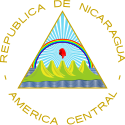|
1947 Nicaraguan Constitutional Assembly election
Constitutional Assembly elections were held in Nicaragua on 3 August 1947. On the night of 25–26 May 1947 Somoza woke the President Argüello in his bed and told him that he was no longer president of Nicaragua. Somoza forced the National Congress of Nicaragua to convene at 3 am and declare the now ex-president mentally incompetent. At the insistence of the diplomatic corps Argüello was not imprisoned but exiled to Mexico where he died in December that year. Benjamín Lacayo Sacasa was Somoza’s next choice for president, but even the new US administration led by Harry Truman found it impossible to recognize such a blatant corruption of the political process.[1] President Sacasa announced on 10 June that a Constituent Assembly would convene on 29 August, following the election of delegates on 3 August. The edict also granted juridical status to the Conservative party, and unnamed antidemocratic parties were outlawed. The assembly was charged with writing a new Constitution, electing a new President and Congress, and reorganizing the judiciary. At the same time the government was attempting to establish its legal basis, it suppressed civil liberties.[2] A decree of 5 July 1947, signed by Provisional President Lacayo, sent the main leaders of the Socialist Party off to internal exile on the island of Ometepe in Lake Nicaragua. They were not accused of doing anything illegal except belonging to a political group that espoused a foreign ideology prohibited by the Constitution.[3] Amid widespread apathy, elections for the Constituent Assembly were held, as scheduled on 3 August. Only Somoza's Nationalist Liberal Party ticket offered candidates. All other groups abstained. Reports from throughout the country indicated that voting was restricted to government workers and ‘poorly clad peons.[2] “The results appear to have been so meager that the official tallies were not even published in ‘La Gaceta/Diario Oficial’”.[4] Results
References
Bibliography
|
||||||||||||||||||||||||||||||||
Portal di Ensiklopedia Dunia
